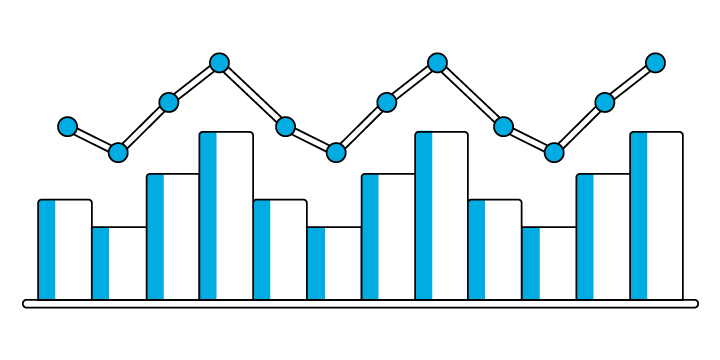Sustainable Forest Trade in the Lower Mekong Region
FOCUS AREAS
Promoting sustainable wood trade in the Lower Mekong region
Read about key highlights, milestones and learnings from the 8 focus areas of the UN-REDD Lower Mekong initiative. Click on the arrows to read more,
01. Regional Trends
Why This Matters
Illegal and unsustainable trade of forest products from the Lower Mekong is acknowledged as a major cause of forest loss. However, illegal trade, by nature, cannot be monitored directly and requires observation of different proxies to guage trends. Importantly, we need to look at how much legal wood trade is taking place, and how this trade responds to policy measures such as export bans of certain types of forest products (such as those from natural forests, unprocessed, or CITES listed species), the growth in forest plantation area, and investments into forest processing and industry.
For the region, China plays a major role as the main demand for the considerable part of forest products trade. In this regard, the direction that Chinese policies or voluntary guidelines take to direct procurement makes a big impact to the forests and forest industries of the Lower Mekong. The preferences of Chinese forest products buyers can also have landscape changing impacts in the Lower Mekong.
Key Achievements
Analysis of forest trade in the region:
-
Primary wood products trade
-
Secondary wood products trade
-
Major species exports
-
The role of plantation wood
-
Industry and market developments
-
A vision for transformational change in the Lower Mekong
Gauging trends in China as a major demand market:
-
Consultation with Chinese timber buyers to better understand forest products trade and investment flows between the Lower Mekong and China
-
Analysis of Chinese policies and guidelines to control and promote legal and sustainable forest products trade and investments
-
A survey on the demand for tropical timber from the Lower Mekong Region to China for FSC stakeholders
Read More
To continue reading and for more information, visit the links below:
| Lower Mekong in Transition: Unpacking the Trends of Forest Trade | Article | Visit Link |
| The Lower Mekong in Transition - WFC XV Side Event Summary | Video | Watch |
| Highlights of the 2021 Regional Dialogue on Sustainable Forest Trade in the Lower Mekong Region | Story | Watch |
| Transboundary Cooperation in Forestry in the Lower Mekong: Improving the Effectiveness of Memorandums of Understanding | UNREDD Programme (un-redd.org) | Article | Visit Link |
| Regional Trends and Scoring | Coming Soon |
| ITTO report | Coming Soon |

02. Communications Campaigns
Why This Matters
Behavioural change campaigns against forest crime and a community of practice of journalists reporting on forest trade have the potential to influence the narratives and transition to sustainable trade policies and practices in the region.
Key Achievements
-
Multi-survey on behaviour and knowledge on forest crime conducted Handbook on behavioural change campaign
-
Monitoring Framework published
-
6 communications campaign plans developed
-
China Rosewood campaign successfully launched and implemented
Read More
To continue reading and for more information, visit the links below:
| Handbook on forest crime | Publication | Visit Link |
| From forest to Furniture | Story | Visit Link |
| Do People Care About Forest Crime | Story | Visit Link |
| Forest For Life, the China Rosewood Campaign | Website | Visit Link |
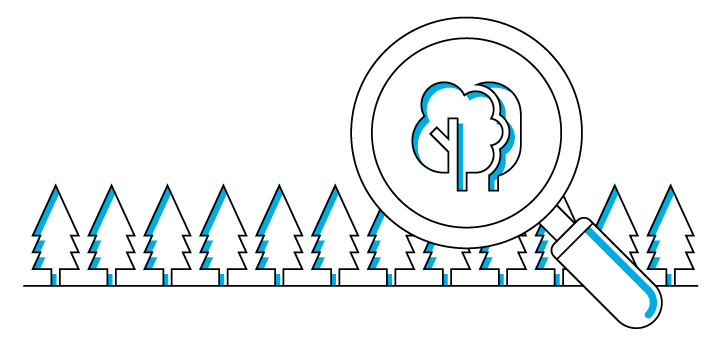
03. Endangered Species
Why This Matters
The Lower Mekong region is a globally important hotspot for biodiversity, but the number of endangered species is on the rise. Rosewood and Agarwood are among the three CITES-listed endangered genus home to the region. The endangered status of Rosewood is the result of an expanding appetite for rosewood furniture in China and across the region - growing with the region's economy. Agarwood-producing taxa of Aquilaria species have been known and loved for their fragrance but over-harvested to the point of depletion.
Key Achievements
-
Assisting Lao PDR in conducting a forest inventory on rosewood sp, which led to publishing a zero quota for the commercial export of wild specimen Dalbergia cochinchinensis and Dalbergia oliveri.
-
Conducted a feasibility study for Cambodia to adopt the electronic CITES permitting system ('e-CITES').
-
Facilitating countries to better understand and access international trade tools to better manage the trade of CITES listed and endangered tree sp.
Read More
To continue reading and for more information, visit the links below:
| Protect and Verify: Legally Trading CITES-listed Trees Species | Article | Visit Link |
| Lao quota for Rosewood | Document | Download |
| CITES Timber ID portal | Portal | Visit Link |
| CITES web platform on Sustainable Forest Trade | Website | Download |

04. Forest Certification
Why This Matters
Forest certification serves as a means to reward producers of sustainable timber by granting them enhanced market access. Despite the potential benefits and the growing demand for certified products, the rollout of forest certification in the Lower Mekong region (LMR) has been slow. There is a crucial need to promote certification by improving awareness and compliance with certification requirements improving the link between supply and demand of certified products, and improving access to competitive and inclusive certification services.
Key Achievements
Paved the way for certified forest products from the Mekong Region to achieve greater market access through:
- The launch of the FSC Tropical Timber InfoHub, offering information on international legality requirements in 8 Asia-Pacific languages.
- The establishment of an FSC Sustainable Tropical Timber Trade Network connecting certified timber suppliers and buyers in the Asia-Pacific region with over 100 registered companies.
- The organisation of 20 networking and awareness-raising events by FSC (engaged over 2,700 individuals) to promote forest certification and sustainable timber trade between LMR and China.
- The organisation of strategic dialogues between PEFC International and the China Forest Certification Council on how PEFC certification can enhance responsible timber trade in China.
- The development of the initial management structures and implementation framework of the PEFC national forest certification scheme in Cambodia and Lao PDR.
- The development of guidance for group certification of smallholders in Thailand, leading to the piloting of effective group certification models replicated in Thailand and Viet Nam.
- The accreditation of 2 new certification bodies in Thailand to certify against the country's PEFC-endorsed certification system, with 6 companies achieving or preparing for Chain of Custody (CoC) certification.
- The organisation of over a dozen training events across Mekong countries to strengthen PEFC certification systems and build capacity for remote auditing.
- A gap assessment of PEFC's Forest Management and CoC standards against the EU's Deforestation Regulation requirements to help PEFC adapt to new market requirements.
Read More
To continue reading and for more information, visit the links below:
| FSC-UN REDD Partnership | Brochure | Download |
| Tropical Timber Info Hub | Visit Link |
| Sustainable Tropical Timber Trade Network Registration | Visit Link |
| PEFC-UNREDD FOR-TRADE Project Brief | Download |
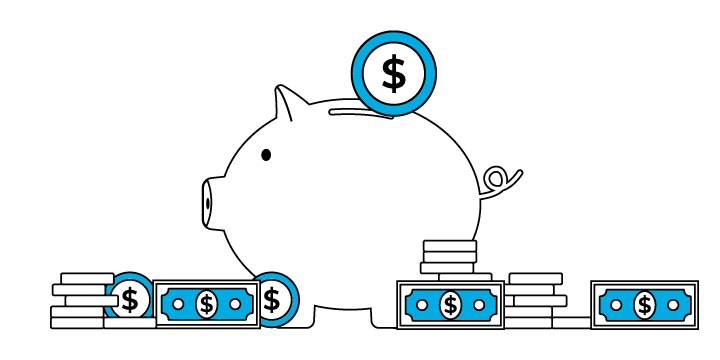
05. Finance
Why This Matters
Banks and financial institutions play a role in greening the supply value chain of forest products by offering financing and investment opportunities for sustainable forestry projects, promoting transparency and accountability in the forestry sector, and implementing due diligence processes to ensure their investments do not contribute to deforestation.
Key Achievements
-
A regional finance forum for collaboration and capacity building between regional lenders launched
-
Assessment on financial flows, policies and guidelines on forest lending conducted
Read More
To continue reading and for more information, visit the links below:
| Banking on Sustainable Timber: What Role do Banks Play? | Article | Visit Link |
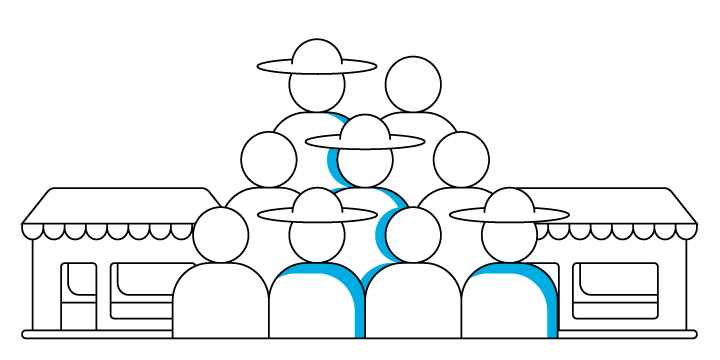
06. Smallholders and MSMEs
Why This Matters
Despite being the primary contributors to timber production in the Lower Mekong Region, Smallholders and Micro-Small and Medium-sized Enterprises (MSMEs) frequently find themselves de facto excluded from legal and sustainable supply chains. This exclusion is often attributed to their informal status and a need for more awareness regarding the requirements for legality and sustainability. Capacity-building initiatives focused on these critical topics have the potential to unlock opportunities, facilitating the integration of smallholders into formalized value chains. By enhancing their knowledge and compliance, these initiatives empower smallholders and MSMEs to access more lucrative markets.
Key Achievements
-
Developed and piloted a curriculum for smallholders to integrate into certified timber supply chains.
- Conducted a total of 4 national trainings in Lao PDR and Thailand, with 77 participants.
- Conducted a total of 7 local trainings in Lao PDR, Myanmar, and Thailand, with 151 participants.
- Five organizations are currently using or planning to use the curriculum in their work.
- Developed a strategy for promoting the future uptake of the curriculum.
Read More
To continue reading and for more information, visit the links below:
| Capacity Development Needs Assessment for Sustainable Forest Trade in the Lower Mekong Region | Publication | Download |
| Sustainable Forest Management and Legal Trade of Forest Products: Pathways Towards Certification | Publication | Download |
| Curriculum Learning Map (English) | Brochure | Download |
| Curriculum in Burmese | Translation | Download |
| Smallholders and MSMEs: Making the timber trade equitable, profitable and sustainable | Story | Visit Link |
| Forest Enterprise Incubation Program Program Summary | Article | Coming Soon |
| Stories from the Forest Enterprise Incubation Program | Story | Coming Soon |
| Forest Enterprise Incubation Program | Blog | Visit Link |
| Forest Enterprise Incubation Program | Social Media Toolkit | Coming Soon |
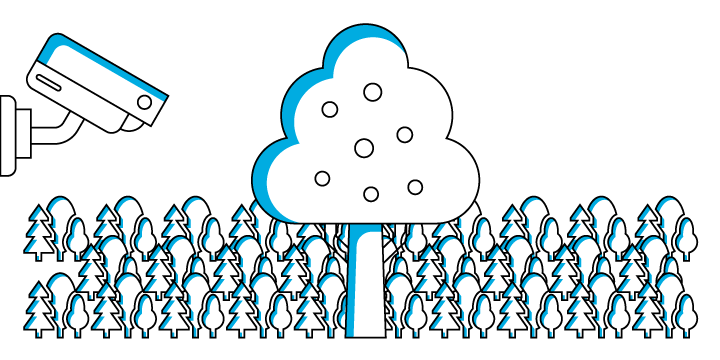
07. Forest Monitoring
Why This Matters
Monitoring unsustainable or illegal forest activities presents substantial challenges that necessitate alternative approaches. Leveraging diverse data sources, including global and regional datasets, platforms, and tools, offers a pathway to understand forest management, production, and trade trends comprehensively. This holistic approach yields valuable insights into both legal and illegal forest activities.
Acknowledging that data and information systems in this context often rely on project-specific foundations and need more integration within national forest monitoring systems is crucial. This highlights a critical need for sustainability in these systems. Moreover, such data and information are frequently inaccessible and confined to specific departments or ministries, emphasizing the importance of improving accessibility, data sharing, and integration efforts.
Effectively addressing these challenges requires real-time information on human interventions in forested areas. This information is vital for combating illegal activities and promoting sustainable forest management practices. Emphasizing collaboration between the public and private sectors is crucial to ensuring data reliability and relevance, thereby strengthening efforts to tackle these complex issues.
Key Achievements
- In Vietnam, the National Forest Monitoring System has played a crucial role in identifying forest degradation areas and prioritizing interventions to address the underlying drivers.
- Implemented/tested a near-real-time forest disturbance mapping system in the region, customized to the needs and situations of each country. This system aims to tackle illegal activities effectively by providing institutions with almost real-time information on forest disturbances. Utilizing open tools and ensuring sustainability through long-term operation, the system has been integrated into national forest monitoring systems through capacity building, extending beyond the Lower Mekong Region.
Read More
To continue reading and for more information, visit the links below:
| Better Data For Better Decisions | Article | Visit Link |
| Navigating Data and Information Systems for Forests | Article | Visit Link |

08. Social & Environmental Monitoring
Why This Matters
Information derived from social and environmental monitoring is essential for understanding the impacts of actions in the forest sector-on forest extent and quality, as well as on environmental, social and economic priorities and objectives. Monitoring these trends presents several benefits for countries and other actors, some of these include: Providing information for reporting on international commitments, such as for relevant SDGs, REDD+ safeguards information systems (SIS), sections on forest in Nationally Determined Commitments (NDCs), and reporting to the Convention on Biological Diversity (CBD)
Key Achievements
-
Compilation of information on a set of global and regional platforms, data and tools, with the goal of helping users to access digital resources that can help them to better understand or track social and environmental trends and outcomes in the forest sector. This information is publicly accessible via a webpage LMR Data and Tools | UNREDD (un-redd.org).
-
Development of an Information Assessment (IA) table and Guidance on completing the Information Assessment (IA) table to provide a generic template for use in supporting assessments of various information systems, information sources and datasets relevant to social and environmental trends and impacts in the forest sector. The table has been designed to allow adaptation by national staff/consultants according to the needs of assessment in each participating LMR country. These assessments range from assessing information systems & sources relevant to REDD+ SIS, to exploring potential for long-term monitoring of forest/land tenure
Read More
To continue reading and for more information, visit the links below:
| LMR Data and Tools | Webpage | Visit Link |
| Information Assessment (IA) table and Guidance on completing the Information Assessment (IA) table | Publication | Coming Soon |
Follow our channels for updates on the Lower Mekong Region
 |
@unredd |
 |
@unredd |
 |
@unredd |
 |
@unredd |

